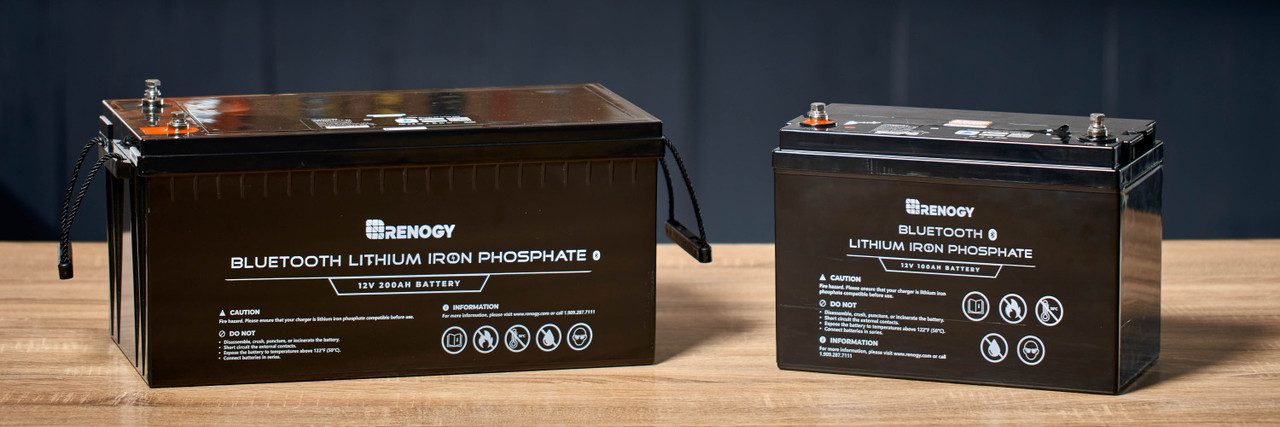Solar Battery Price: Is it Worth the Cost?
Solar Battery Price: Is it Worth the Cost?
You might think that the cost of a solar battery outweighs its utility, particularly in 2022 when certain fabrication issues and chip shortages have impacted the global tech market.
But you may be pleasantly surprised! When considering solar battery prices, you need to look at the cost of disruption, the cost of alternative generation, and the payback period of the technology you adopt. In that context, the price of solar batteries and all of the associated hardware is still quite low - particularly when you look at the rise in fossil fuel prices worldwide. Those gas and kerosine generators are just burning money these days.

So let’s jump into it! We’ll cover both typical home usage, as well as the sheer necessity of a good solar battery setup as part of a true off grid solar kit.
Table of contents:
- Solar battery storage vs selling back to the grid
- When will solar batteries be affordable?
- The value of a solar battery to prevent disruption
- The value of a solar battery compared to generators
- Solar battery storage price Australia and payback period
- Solar batteries for an off grid solar kit
- Getting help with your solar battery planning
Solar Battery Storage VS Selling Back to the Grid
If you can sell back to the grid, what’s the point in storing energy yourself?
Well, it’s a strictly mathematical calculation. If your local or regional energy provider will pay you a greater percentage than the roundtrip efficiency of available solar batteries, you should sell back to them instead. That's almost never the case of course, so it comes down to how much (or how little) they’re actually offering VS the expense of installing a battery system. The less they offer, the more incentive you have to store energy to avoid paying full price for your electricity.
For example: Let’s say you’re using a Powerwall 2 storage medium, with a 90% round trip efficiency. That means you’re losing 10% of your energy’s value by storing it for use later on. If the energy company is only offering you 60% of your energy’s value, you lose an additional 30% every time you need to buy it back from them.

That’s an oversimplification of course, not calculating ongoing storage efficiency, off peak pricing, spot energy market generation, and grid tariffs. But it should help you to understand why simply selling back to the grid isn’t always better than storing the energy for later use.
When will solar batteries be affordable?
The calculation is set to shift even more in favor of energy storage over the next few years. Once electronic components become more readily available, and even higher density batteries see mass production, solar battery prices can be expected to come down. That will tilt the contest even more in favor of storage VS selling back to the grid.
In a decade or two we might even be looking at affordable non-battery storage mediums. For example, flywheels using magnetic ball bearings are being used at the industrial level now, and they’re seeing a staggering 99% round trip efficiency! But it will be a number of years before we see anything affordable scaled down for home and personal off-grid use. So until the mid 2030’s, solar batteries will still be your best bet.
The Value of a Solar Battery to Prevent Disruption
The first thing that you need to calculate is a bit more subjective than the other criteria: How much will a temporary power outage cost you?

If you’re working from home, or from your RV via an off grid solar kit, the impact of a power outage is crystal clear - you’ll either need to make up that work later if you’re on salary, or you might simply lose business if you’re an independent contractor. Not to mention the reputational cost involved if you blow a deadline.
Certain professions need uninterrupted power more than others. People who do remote consultations, Twitch streamers, stock and currency traders, professional gamers and gamblers, and remote customer service representatives all need rock solid Internet and reliable power.
A good rule of thumb to estimate the ripple effects of this disruption cost: For every hour without power, a contractor loses triple their hourly rate; minimum of one hour if you lost work from even a brief outage. That represents about 1/600th your annual salary if you aren’t paid by the hour.
For non-work related disruption calculations, things get more subjective. What’s your free time and comfort worth? What’s your social life and online time worth? That’s something only you can answer.
The Value of a Solar Battery Compared to Generators
If being without power simply isn’t an option, we have to look at the alternative: Burning fuel to generate power. Spoiler: Even without mentioning the obvious green impact, this contest is stacked towards solar power storage.

For a 5-kilowatt petrol generator, you’ll burn through 0.75 gallons of gas an hour. Costs this year spiked up to around $8 a gallon in Australia, but they’re now sitting at around $6.50. So figure around $5 an hour to just cover the basics; keeping the place climate controlled and running a fridge, PC, network gear, and lighting.
Depending on market, availability, and demand, you may or may not do better with kerosene or diesel. But this is a fair baseline operating cost for most people, not including the purchase of the generator and the maintenance involved.
With solar, of course, you’re using renewable energy to charge up the battery. Anything excess that you produce gets put into storage, right up to the limit of the solar battery’s capacity. You won’t get 100% efficiency, but as far as access to power during a cut (or when the sun isn’t shining, in the case of off grid solar kits), the only thing you’re paying for is ‘wear and tear’ on the system in the form of lifetime discharges - considerably less than $5 an hour!
Solar Battery Storage Price Australia and Payback Period
Though we’re simplifying things a bit, there are some good ways to calculate things like the lifetime of a solar battery setup. The point at which natural generation and stored solar power beats the typical grid setup is over the long term - the extra cost of the initial infrastructure needs to be paid off by the free power it generates. When this happens, we’ve achieved the ‘payback period’, or break-even point.
For a home battery setup, you’re typically talking about something in the five to ten kilowatt range. The price of solar batteries is predictable, with $1,000 / kWh of storage being pretty common in mid 2022. The Tesla Powerwall 2 runs between $14k and $15k for 14 kWh storage, while the LG Chem Resu costs about $10k for 10kWh of storage. Both have 10 year manufacturer guarantees, and both are rated for 4,000 full charge and drain cycles.
On the smaller side, Sungrow has a couple of different options. Because they’re pushing their new modular, stackable battery array system, the older 4.8 kWh solar battery price can be under $4,500… if you can find one. Otherwise, the new stackable SBR Series, consisting of 3.2 kWh units, are more expensive if you only get one or two, but get cheaper as you stack them higher.

So for home or business based setups, the payback period with the appropriate sized battery will be around double the panel-only period. Because we’re in a sunny part of the world, panel-only setups generally break even in five to six years. A hybrid setup with a battery generally breaks even in around ten years. Of course you need to factor in the disruption prevention benefits mentioned above, which might shave a year or two off of the payback period in your particular case.
Whereas most people who can make the investment should consider solar panels essential, solar battery prices aren’t quite at the stage where they’re a no-brainer. So why do it, instead of using a combination of solar and the grid? Quality of life, mostly. Anyone working from home a lot in an area that doesn’t have the best electricity grid will find one of these batteries a godsend. And if for any reason you can’t sell excess generation back to the grid, or if the price for selling back is low in your area, using the power yourself is preferential to letting it go to waste.
And the truth is, not everyone needs a massive battery capacity for domestic use. If you only get periodic, brief grid power outages, you may want to use batteries as a kind of uninterruptible power supply for the home. In that case, 12 volt lithium battery stacks might be more appropriate. Check out the next section to get a breakdown on how they work.
Solar Batteries for an Off Grid Solar Kit
The math becomes quite different when you’re talking about an entirely off grid solar kit; particularly in the case of campers and boats. Some kind of battery setup is required, or you’re going to be pretty miserable out there.
So the question becomes: What’s the best value available? To answer that, we need to figure out how much power you need at any given time.
Start by plugging the essentials into our solar power calculator.
Air conditioning is going to be the number one chunk of power consumption for most people. It’s also going to require the most battery consumption if performed outside of peak hours. It stands to reason that the places which get the most sunlight also need the most environmental control. So pre-cooling the environment during peak power generation is suggested, since maintaining a lower temperature is more energy efficient than trying to cool everything down at once later on.
Once you have a working figure for total power consumption, it’s time to see what kind of batteries you’ll need for your off grid solar kit. For some technical information on the pros and cons of various off grid battery arrays, check out our solar battery guide. And for a primer on LiFePO4 batteries, check out our comparison to lead based alternatives.

For our purposes, let’s talk about typical mobile and cabin energy storage setups for off grid solar kits. This boils down to how many 12 volt lithium battery stacks you need to use.
A single Renogy 200AH 12V Lithium Deep Cycle Battery represents 2.4 kWh of energy storage. It’s your best density to value ratio. 2.4 kWh can be significant… until you calculate air conditioning or any other particularly intense energy usage.
For most small to medium sized cabins, one 12 volt lithium battery isn’t going to be enough. Two for a small cabin and three for a medium cabin is more realistic unless you plan on roughing it. Add an additional battery for every two people who plan on sharing the cabin’s space. Even then you need to wisely make use of your on-demand sunlight, and ration carefully on overcast days.
For campers and recreational vehicles, space is the biggest concern. Consider at least two 12 volt lithium batteries - and if you’re a heavy A/C user, more is better. Remember that every hour and a half of air conditioning you use will fully drain one of these batteries. We weren’t joking about using pre-cooling techniques during peak sunlight hours - it’s almost a necessity unless you have grid access.
Your battery charge budget can disappear before you know it, if you aren’t careful. For emergencies, consider getting yourself a 150W hand crank generator. If you’re completely drained and you need to charge a mobile phone for an emergency call, this can literally be a life saver.
For off grid, there’s no payback period to calculate. But be aware that the batteries themselves will have to be recycled periodically, so make sure you’re getting your money’s worth out of them. Typical use of a Renogy 12 volt lithium battery will result in about five to six years of effective life - or 2,000 full discharge cycles. After that, you’ll get diminishing returns and a reduced full capacity until it is replaced.
Getting Help with Your Solar Battery Planning
It’s not always easy to do all of the calculations yourself, particularly if your situation isn’t exactly run of the mill.
If you need any help determining if current solar battery prices are in the right place for your budget, contact us. We’re happy to field any questions that you might have, and share current pricing trends. We might be able to point you towards current or upcoming government incentives that can make the price of solar batteries and off grid solar kits more affordable.
Related articles:
A Comprehensive Guide On Solar Panel Size
Choosing Solar Batteries 2022: LiFePO4 Battery Vs. Lead-Acid Battery
Everything You Need to Know About Lithium Battery Charging Cycles
How long do deep cycle solar batteries last?
Smart Lithium Iron Phosphate Batteries for Solar: What Are the Benefits?






